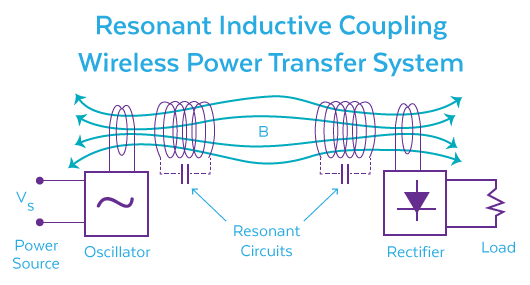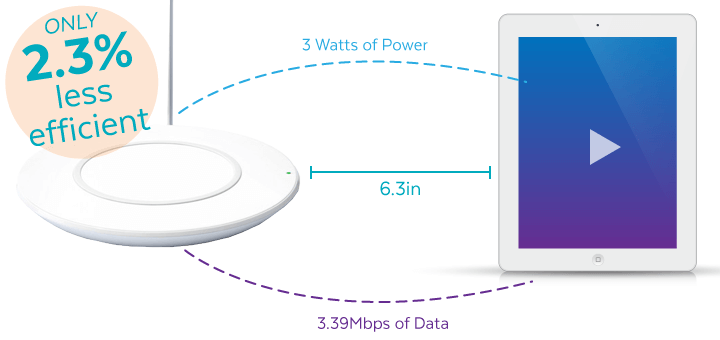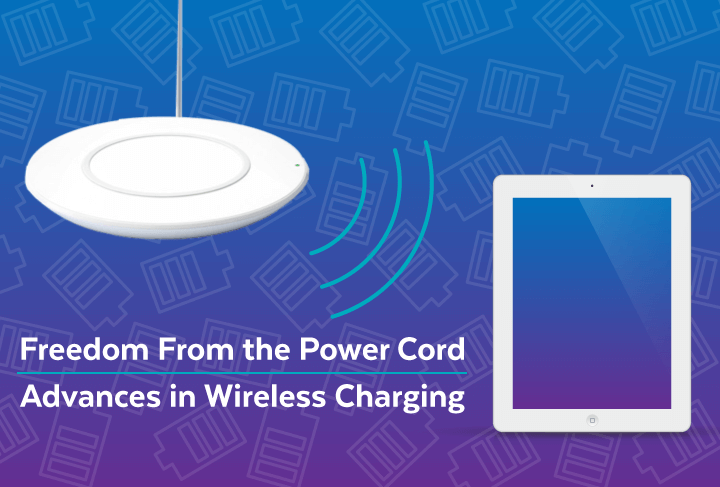When it comes to electronic devices, recharging has always been a bit of a headache. Even the latest smartphones require a decent chunk of time plugged in, and getting longer battery life is an uphill battle.
There’s one solution we’ve been watching very closely however. That’d be wireless charging.
Any number of half-way there solutions have popped up from time to time, but none of them have truly got it right.
Nor did the latest iPhones. But they do show that we’re definitely getting closer to a truly compelling wireless charging solution.
Apple Finally Adds Wireless Charging to iPhones
In case you’ve been living under a rock, Apple recently released both the iPhone 8, and a new flagship device, the iPhone X.
The iPhone 8 model alone takes a $150 jump up from the current pricing on the iPhone 7. But that’s pocket change compared to the $1,000 price tag the iPhone X currently commands.
Now, some critics have mentioned that there’s not actually a huge difference between these new models and the iPhone 7. From what I’ve seen, I’d have to agree.
But the new phones do have one feature that Apple is actually a bit late to the market on… wireless charging.
As this power transfer technology is still in its infancy, close proximity is a prerequisite to getting a charge. Longer range recharging is still in the future. Although, as we’ll cover in this article, that solution may not be as far off as you’d think.
Wireless Power Transfer Breakthrough
Researchers from North Carolina State University recently published an IEEE paper titled Ultra-high Data-rate Communication and Efficient Wireless Power Transfer at 13.53 MHz.
In it, the researchers details their findings for a wireless recharge system their team has been hard at work developing. Using their technology, wireless can now simultaneously deliver power and transmit data at rates high enough to stream video!
The key here is integrating both power and high-speed data, into a single “wireless” transmission.
“One of the most popular applications is in wireless cell phone charging pads,” says David Ricketts. Ricketts is an associate professor of electrical and computer engineering at NC State and senior author of the research paper.
Historically, cellphones could only be charged wirelessly at a distance of a few inches. In general, physical contact with a recharge pad has been required.
But now, researchers have been able to start extending that distance, and combine data transfer in the same wireless stream.
As we know, smart devices need both power and data, so this is a natural evolution of how our wireless networks function.
The real reason these developments at NC State are so groundbreaking, is the fact that they address both power and data needs.
How Does Wireless Charging Work?
So you may be wondering, how exactly is power being transferred to devices withou the need for an attached power cord?
In short, via magnetic fields, or Inductive Power Transfer (IPT).
An electrical current is passed over coils between two objects, and this creates an electromagnetic field. The magnetic field generates current in the receiving device through the process of resonant coupling, and that current is then converted into DC which can charge the device battery.

Wireless power transfer technologies aim to minimize the power that could potentially be lost by using antennas that operate on a very narrow bandwidth.
Where the NC State team made a big advance, was in realizing that the power sent from a narrowband wireless antenna could be integrated into a system of wider bandwidth. That opened the door for them to combine both data and power into a single wireless stream.
Antenna manufacturers are likely very excited about this news. This could breathe new life into a technology that many had begun to consider nearly obsolete.
Sounds a lot like the resurgence Ethernet technology has experienced over the past few years. We just covered this exact topic, so if you’re curious, be sure to read the article.
Let’s take a closer look at how this exciting technology can be applied as it becomes more advanced and accessible.
How Wireless Power Will Shape the Future
The potential applications are almost endless.
Start by asking yourself the following question: what sorts of devices rely on wireless for data? Then ponder how many of those devices need to be plugged in.
Yeah. That’s a huge number of applications.
Then if you start to let your imagination have a little fun, think about things like the possibility of charging drones wirelessly. Or what about electric autonomous cars. Will they someday recharge the way we pay tolls on the highway?
A brief pause under a wireless charging unit? Monthly invoices for highway power usage? It’s fun to imagine the more innovative and ground-breaking ways this technology could change our lives in the near future.
Final Thoughts
No one can say how soon we’ll have wireless charging that can reach more than a few feet. But what we can say, is that progress is being made towards a wireless future.
The big news here is that the tar-heel researchers found compelling reasons to target combining wireless power and data streams for the future development of this technology.
They found that when transferring just shy of 3 watts of power wirelessly (that’s more than enough to power a tablet during video playback), the system was only 2.3% less efficient when also transmitting 3.39 MB/s of data.

Apple may be late to the party by only adding wireless charging to the most recent iPhone models, but it has helped to keep the discussion going.
A consumer-facing and versatile wireless charging solution is indeed on the horizon, and the sky will ultimately be the limit. So sit tight, we’ll keep you up to date if there are any new breakthroughs in the coming months.

